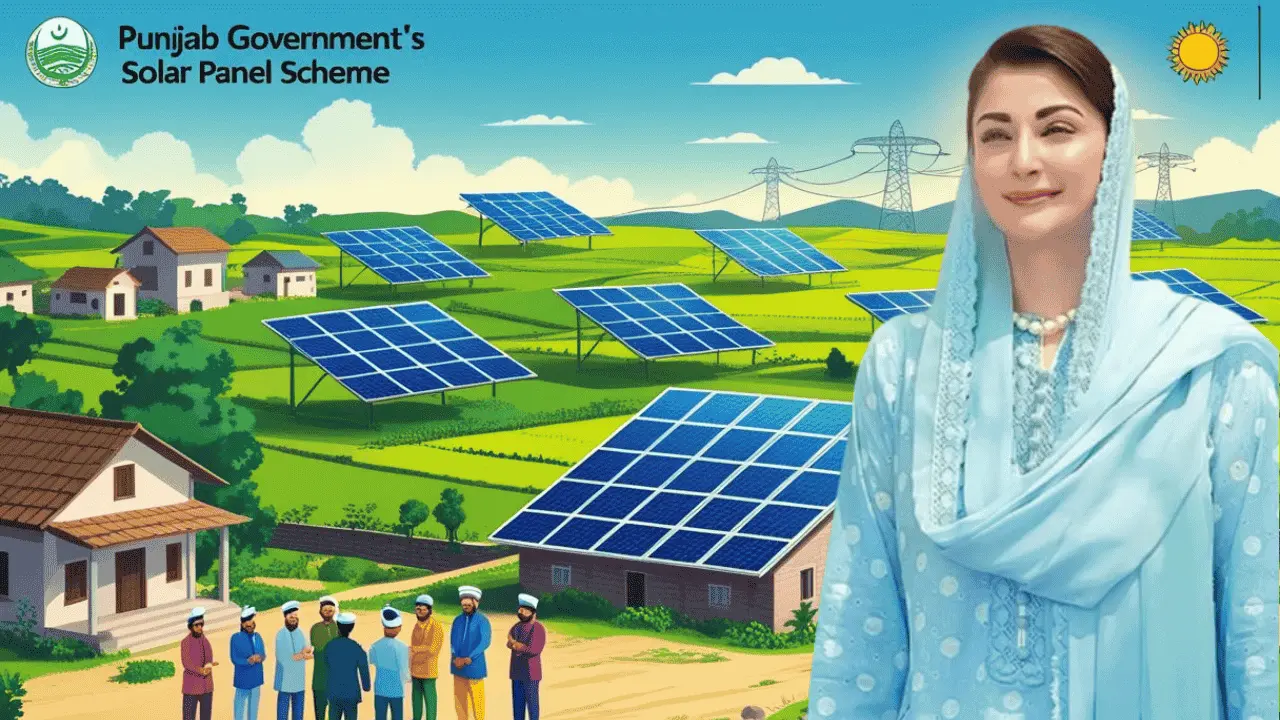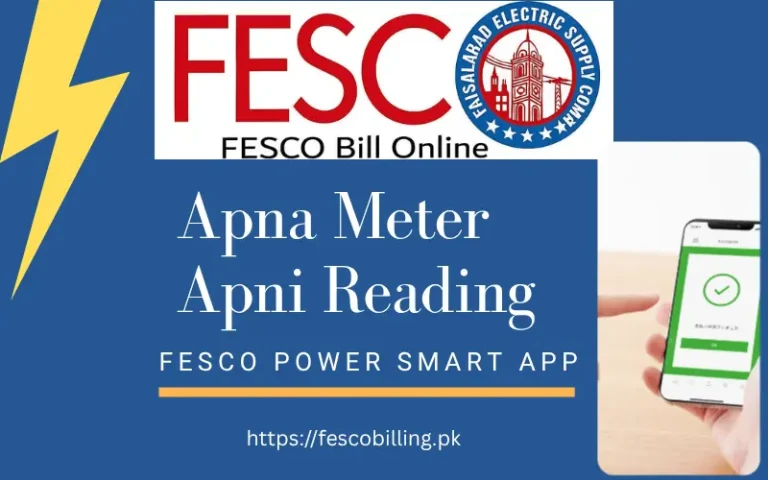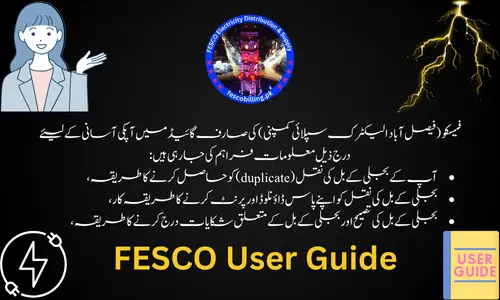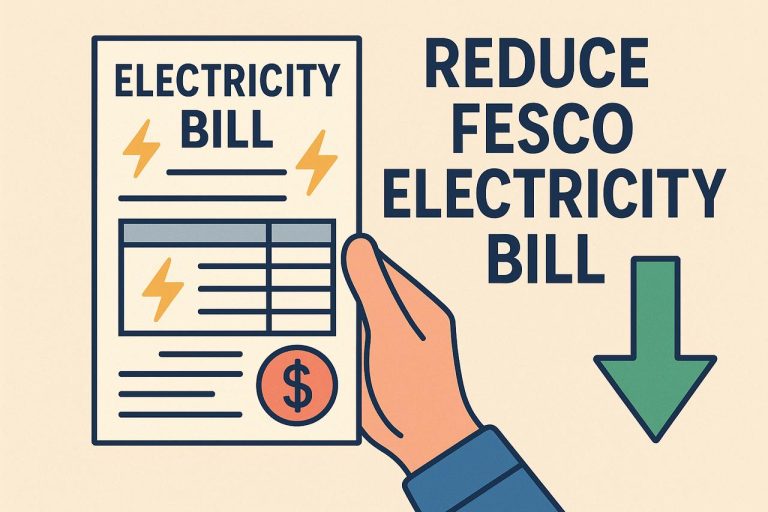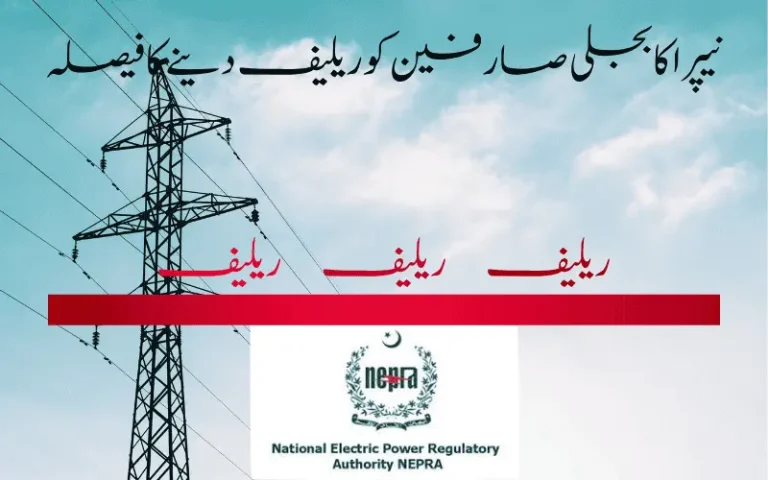Punjab Govt Solar Panel Scheme: Eligibility and Application Process 2025
The Punjab government has launched a comprehensive solar panel scheme to provide free solar energy systems to low-income households across the province. The scheme offers up to 100,000 standalone solar systems at no cost to families consuming between 0-200 electricity units per month. Led by Chief Minister Maryam Nawaz Sharif, this initiative represents a significant step toward making renewable energy accessible to middle and lower-income communities struggling with rising electricity costs.
The program targets households that face financial challenges in managing their monthly electricity bills while promoting sustainable energy adoption throughout Punjab. Eligible residents can access these solar systems through online applications or SMS registration, with the government emphasizing transparency in the selection process. The initiative specifically focuses on providing 2KV solar panels to qualified consumers who meet the established criteria.
Understanding the application process, eligibility requirements, and available benefits becomes crucial for households interested in participating in this renewable energy program. The scheme encompasses various aspects including documentation requirements, implementation timelines, and potential challenges that applicants should consider when exploring this opportunity for energy independence and cost savings.

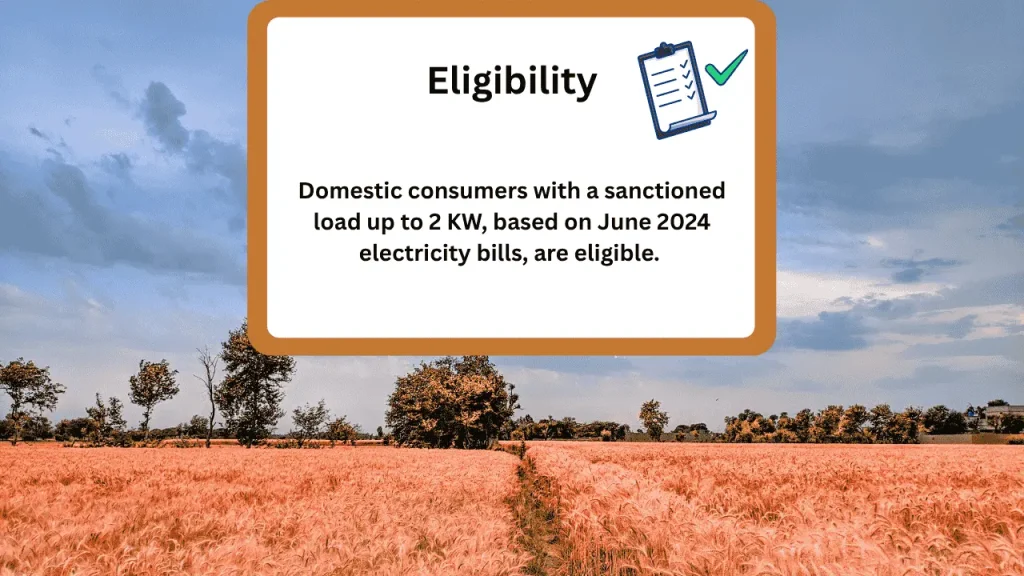
Overview of the Punjab Govt Solar Panel Scheme
The Punjab Government has launched an ambitious renewable energy initiative targeting 100,000 households with free solar systems. Chief Minister Maryam Nawaz Sharif leads this program with a budget allocation of Rs 12.6 billion to address electricity shortages and promote sustainable energy solutions.
Objectives and Vision
The scheme aims to provide sustainable and affordable energy solutions to low-income households across Punjab. The primary objective focuses on reducing electricity costs for consumers who use between 0-200 units monthly.
The government designed this initiative to alleviate the financial burden of rising electricity bills. It specifically targets middle and low-income families who struggle with energy costs.
Key Vision Elements:
- Promote renewable energy adoption
- Support modest communities financially
- Create a green and sustainable Punjab
- Reduce dependence on traditional electricity sources
The program represents the government’s commitment to environmental sustainability. It addresses both energy poverty and climate change concerns through clean energy access.
Scheme Launch Timeline
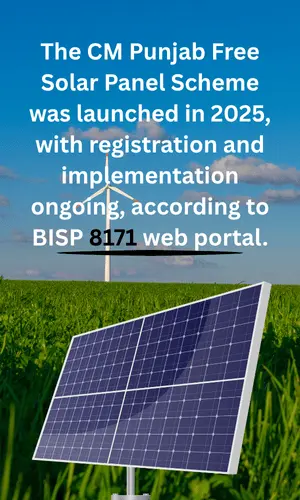
Chief Minister Maryam Nawaz Sharif officially launched the Punjab Free Solar Panel Scheme in 2025. The registration process has begun with digital balloting conducted for transparent beneficiary selection.
The implementation follows a phased approach. Phase I targets 50,000 protected consumers under the Roshan Gharana Program with subsidized solar systems.
The government plans to distribute 100,000 solar systems over the next year. This timeline ensures systematic coverage of eligible households across Punjab.
Digital balloting marks a crucial step in the selection process. This method ensures transparency and fairness in beneficiary identification.
Key Features
The scheme provides free 2KV solar panels to eligible consumers. Applications can be submitted through SMS or online banking platforms for convenient access.
Eligibility Criteria:
- Monthly electricity consumption: 0-200 units
- Punjab residents only
- Low to middle-income households
- Transparent qualification process
The program offers different system capacities based on monthly usage patterns. Consumers using 100 units receive specific system configurations tailored to their needs.
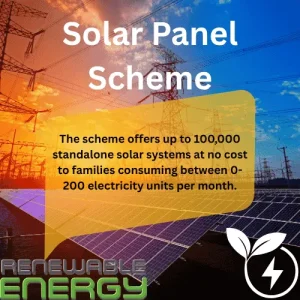
Application Methods:
- SMS registration
- Online banking platforms
- Digital application process
The Rs.12.6 billion budget ensures comprehensive coverage of targeted households. This substantial investment demonstrates the government’s commitment to renewable energy transition.
Eligibility Criteria and Required Documentation
The Punjab Solar Panel Scheme targets domestic consumers with monthly electricity consumption between 0-200 units. Applicants must be permanent residents of Punjab province and meet specific documentation requirements for registration.
Who Can Apply
Domestic consumers in Punjab with monthly electricity consumption up to 200 units qualify for free solar panel scheme. The scheme specifically targets households consuming between 0-200 units per month.
Households using up to 100 units monthly receive a 550-watt solar system. Those consuming 100-200 units qualify for a 1,100-watt system with maximum capacity of 2 kilowatts.
The eligibility assessment uses electricity bills from June 2024 as the reference period. Selection occurs through a computer-generated lottery system among qualified applicants.
Households consuming 200-500 units monthly qualify for interest-free loans rather than free systems. The scheme provides up to 100,000 solar systems across Punjab province.
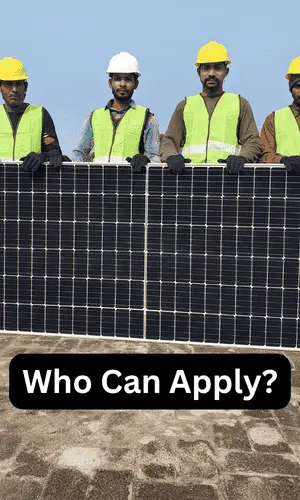
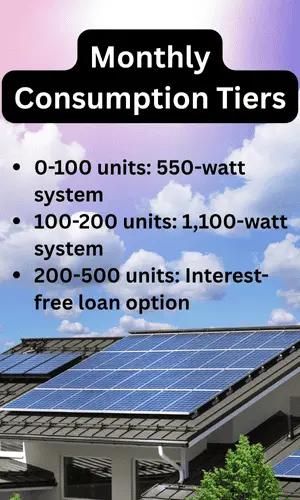
Income and Residency Requirements
Applicants must be permanent residents of Punjab province with valid Pakistani citizenship. The scheme prioritizes poor households with low electricity consumption patterns.
Monthly Consumption Tiers:
- 0-100 units: 550-watt system
- 100-200 units: 1,100-watt system
- 200-500 units: Interest-free loan option
The sanctioned load must not exceed 2 kW for free system eligibility. Residential properties must be located within Punjab provincial boundaries.
Necessary Documents
Registration requires specific documentation for verification and processing. Applicants must submit original documents along with photocopies.
Required Documents:
- Valid CNIC (Computerized National Identity Card)
- Electricity bill from June 2024
- Bill reference number
- Proof of residency in Punjab
The registration process occurs at Bank of Punjab branches nationwide. Applicants request the CM Punjab Solar Panel Program registration form and complete all required fields.
Documents undergo verification before lottery selection. Approved beneficiaries receive installation schedules after confirmation of eligibility and registration status.
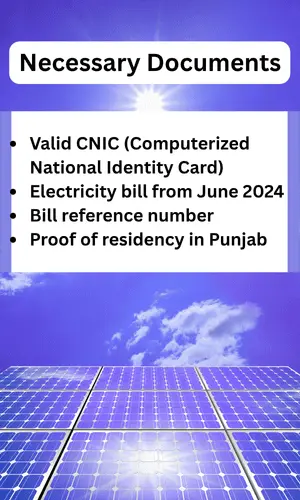
Application Process for the Solar Panel Scheme
The Punjab government offers two convenient methods for residents to apply for the free solar panel scheme. Applicants can choose between online registration through the official portal or offline submission at designated bank branches.
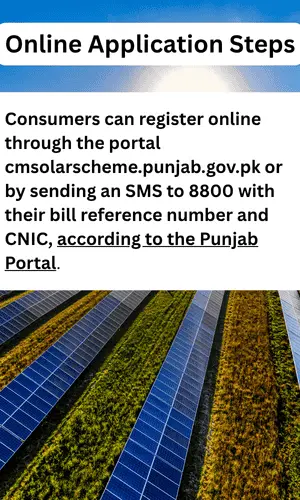
Online Application Steps
The most convenient way to apply is through the SMS registration system. Applicants should type their electricity bill reference number followed by a space, then their CNIC number without dashes.
The message should be sent to 8800. The system will process the application and may prompt applicants to visit the official website for additional steps.
For complete online registration, applicants must visit cmsolarscheme.punjab.gov.pk. The portal requires basic information including name, email address, CNIC number, mobile number, and electricity bill reference number.
After submitting the initial form, applicants receive a verification link in their email inbox. They must click this link to verify their email address and activate their account.
Once verified, applicants can log into the portal using their credentials. They need to enter their bill reference number and review the displayed details for accuracy before final submission.
Offline Submission Procedures
Residents who prefer in-person applications can visit their nearest Bank of Punjab (BOP) branch. This option provides direct assistance from bank staff throughout the registration process.
Applicants must bring all required documents to the bank branch. These typically include their original CNIC, recent electricity bill, and proof of residence within Punjab province.
Bank representatives will verify the documents and complete the application form on behalf of the applicant. This ensures all information is accurately recorded in the system.
The offline process allows applicants to ask questions and receive immediate clarification about eligibility requirements. Bank staff can also provide updates on application status during the visit.
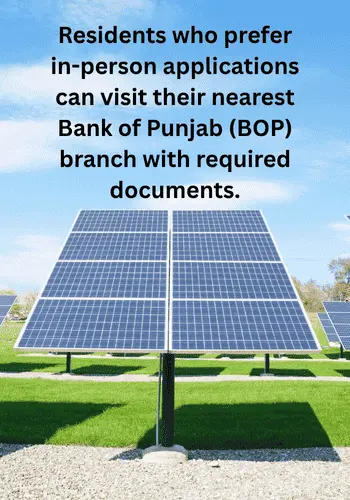
Benefits of the Punjab Govt Solar Panel Scheme
The Punjab government’s solar panel initiative delivers significant financial relief to households while contributing to environmental sustainability. The program provides measurable cost savings and improved energy access across different consumption categories.
Financial Savings for Beneficiaries
Households consuming 0-200 units monthly receive complete solar systems at no cost. These systems include solar panels, inverters, and batteries worth thousands of rupees.
A 1kW solar system generates 100-150 units monthly. This translates to savings of Rs. 6,500-9,750 per month on electricity bills.
For consumers using 200-500 units, the government provides interest-free loans. Recipients can repay these loans through manageable monthly installments without additional financial burden.
High-consumption households (above 500 units) benefit from 75% government subsidy. They pay only 25% of the total system cost, making solar energy accessible to middle-income families.
The scheme distributes 550W to 2kW systems based on household consumption patterns. Each system includes complete installation and maintenance support.
Environmental Impact
The initiative targets 100,000 households across Punjab, creating substantial environmental benefits. Solar energy reduces dependence on fossil fuel-based electricity generation.
Each solar installation eliminates carbon emissions equivalent to traditional grid electricity consumption. The cumulative effect across all beneficiaries significantly reduces Punjab’s carbon footprint.
Solar panels produce clean energy for 20-25 years without emissions. This long-term environmental benefit extends far beyond the initial installation period.
The program promotes energy independence at household level. Reduced grid dependency decreases pressure on conventional power plants and transmission infrastructure.
Expected Improvements in Energy Access
Rural and low-income households gain reliable electricity access through standalone solar systems. These systems operate independently of grid connectivity issues.
The 2kW capacity systems provide sufficient power for essential household needs. Basic lighting, fans, and small appliances operate effectively on solar energy.
Battery storage ensures continuous power supply during evening hours and cloudy weather. Households experience fewer disruptions compared to grid-dependent electricity.
Solar systems require minimal maintenance and have operational lifespans exceeding 20 years. This provides long-term energy security for beneficiary families.
The program specifically targets households in remote areas where grid connectivity remains unreliable or unavailable.
Subsidies, Grants, and Financing Options
The Punjab government provides substantial financial support through a 75% subsidy structure and complementary financing schemes. Multiple funding sources work together to make solar systems accessible to different income groups across the province.
Government Subsidy Structure
The government covers 75% of total solar panel costs through direct subsidies and commercial financing partnerships. This significant reduction makes solar technology affordable for middle-income households who don’t qualify for free systems.
Eligible consumers pay only 25% of the installation cost upfront. The remaining amount gets handled through government-backed financial institutions and commercial lenders.
The subsidy applies to households consuming between 200-500 electricity units monthly. Agricultural consumers and small businesses also qualify for similar subsidy rates under specific categories.
Key subsidy benefits include:
- Reduced upfront investment by three-quarters
- Government-guaranteed financing terms
- Transparent allocation through lottery system
- Coverage for installation and equipment costs

Processing times for subsidy approval typically range from 2-4 weeks after application submission. Approved applicants receive confirmation letters with detailed payment schedules and installation timelines.
Available Loans and Repayment
The Punjab Solar Panel Financing Scheme operates through authorized commercial banks and financial institutions. Banks offer interest-free loans for qualified applicants, particularly small and medium enterprises.
Loan amounts cover the remaining 75% of system costs after the consumer’s 25% contribution. Repayment periods extend up to 5 years depending on system size and applicant’s financial profile.
Financing options include:
- Flexible repayment schedules
- Zero-interest loans for SMEs
- Minimal documentation requirements
- Quick approval processes

Agricultural sector participants receive special financing terms with seasonal payment options. These arrangements align with crop cycles and harvest periods for farmer convenience.
Banks require basic documentation including CNIC, electricity bills, and income verification. Collateral requirements vary by loan amount and applicant category.
Implementation Challenges and Future Outlook
The Punjab solar panel scheme faces significant logistical hurdles while planning substantial growth. Administrative bottlenecks and infrastructure limitations present immediate concerns, yet the government has outlined specific expansion targets for broader coverage.
Potential Obstacles
The scheme encounters several operational challenges that could impact its effectiveness. Installation capacity remains a primary concern, as the current infrastructure may struggle to accommodate the high demand from eligible households.
Supply chain disruptions pose another significant barrier. The procurement of quality solar panels, inverters, and batteries requires consistent supplier relationships and adequate inventory management.
Administrative processing presents ongoing difficulties. The lottery-based selection system, while fair, creates delays in approval and installation timelines for selected households.
Rural accessibility creates additional complications. Remote areas in Punjab often lack proper road infrastructure, making equipment transportation and technician access challenging for installation teams.
Quality control monitoring becomes increasingly difficult as the program scales. Ensuring proper installation standards and equipment functionality across thousands of households requires robust oversight mechanisms.
Financial sustainability concerns arise as the program expands. The government must balance growing demand with available budget allocations while maintaining service quality.
Planned Expansions
The Punjab government has announced specific growth targets for the solar panel scheme. Current plans include expanding coverage beyond the initial 100,000 households to reach additional eligible families.
Geographic expansion will prioritize underserved rural districts. The government aims to increase installation capacity in remote areas where grid electricity remains unreliable or expensive.
Technical improvements are planned for future phases. Enhanced solar panel efficiency and battery storage capacity will be incorporated into new installations.
The scheme may extend eligibility criteria to include households consuming up to 300 monthly units. This expansion would accommodate middle-income families struggling with rising electricity costs.
Farmer-specific programs represent a key expansion area. Agricultural communities will receive tailored solar solutions designed for irrigation and farm operations.
Partnership development with private sector companies will accelerate installation capacity. These collaborations aim to reduce government burden while maintaining program quality standards.

